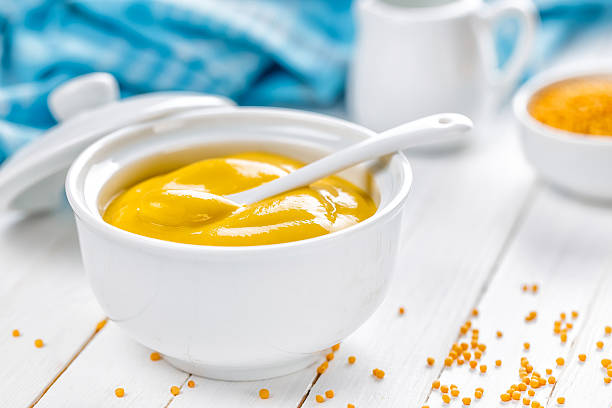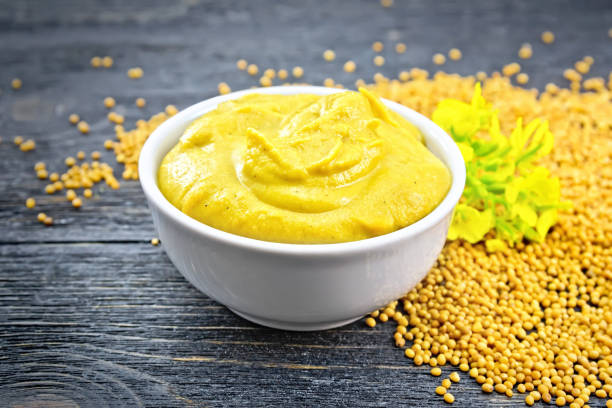Make your own mustard and simply make it yourself? Simply mix five ingredients together and you have your own mustard to season to taste. You can let your creativity run free in mustard production.
Make delicious mustard

Are you making a salad or breakfast with white sausage but don’t have any mustard to hand? Or would you like to try something new in the kitchen? Then just make your own mustard, because it’s easier than you might think and you only need 5 ingredients.
You can find the ingredients for this in any grocery store. And you can give your mustard a personal touch with simple things like the degree of flour in the mustard seeds or the ratio of black to white mustard seeds. And the best thing is, you can taste it individually, just as you would like it.
What do you need to make mustard yourself?
- 50 g mustard seeds (white or black)
- 40ml of water
- 30 grams of wine vinegar
- 30 g sugar (alternatively honey)
- 5 grams of salt
Step-by-step instructions
- The mustard seeds must first be washed and dried.
- Then they are crushed with the help of a mortar. You can do this finely or coarsely as you like. Alternatively, you can of course mix the grains. (To save yourself this step, you can also use mustard powder.
- You can then mix the remaining components together and slowly stir them into the mustard flour that has been created before.
- This mixture is left to swell and then you can season it to taste.
- Now you can fill your mustard in well-sealable jars so that it keeps for a while.
Make an alternative recipe to the mustard yourself
- Blend the mustard seeds with food and water until paste forms.
- Then add the remaining components
Tips for making mustard

- The mustard seeds should not have a temperature above 30°C, otherwise, they will become bitter.
- If you want to give your mustard that certain something, you can refine it with fresh spices, paprika or curry powder, and many other spices.
- The mustard is also suitable as a gift. Simply fill the mustard in a nice glass and label it. Everyone is sure to be happy about a gift that you have put so much work into!
- If you like it spicy, you should use dark mustard seeds, because the darker the seeds, the hotter they are.
But if you prefer it sweet, you should simply add more sugar or honey. - To make medium-hot mustard, you can simply mix white and black mustard seeds in a 50:50 ratio.
- After opening a jar of mustard, make sure to keep it closed in the fridge, otherwise, it will lose its sharpness
- Consequently, you can leave the jar at room temperature for a day if the mustard is too hot for you.



